Occupational environment monitoring at a lubricating oil manufacturing factory
99,000 ₫
Note: The above price is calculated for one sample. Prices may vary depending on the area of the environment to be monitored and market fluctuations. For more accurate pricing, please refer to the price list or contact our consulting staff directly.
Monitoring the environment of lubricating oil production factories involves collecting, analyzing, and evaluating workplace factors that may be harmful to workers health.
Table of Contents
Toggle1. Overview of Lubricant Oil Manufacturing Factory
a. What is a lubricant oil manufacturing factory?
Factory producing lubricant oil is a manufacturing facility used to create and produce various types of lubricant oils. Lubricant oil is a liquid used to lubricate and protect machinery parts, engines, and other equipment to reduce friction and temperature, increase operational efficiency, and extend their lifespan.
Lubricant oil factories typically have processes and technologies to produce, refine, and package different types of lubricant oils based on specific requirements and applications. The production process includes combining main components such as base oils, additives, detergents, and other auxiliary substances in precise proportions to create lubricant products with various properties and characteristics.
Lubricant oil factories usually comply with environmental, safety, and quality regulations and standards to ensure that the final product meets requirements and is safe for users.

b. Production stages in a lubricant oil manufacturing factory
The production stages in a lubricant oil manufacturing factory may include:
- Base oil extraction: This process involves selecting and extracting suitable base oils such as mineral oil, synthetic oil, or vegetable oil.
- Blending: Base oils are blended with additives such as performance enhancers, film-forming agents, antioxidants, and other additives to provide lubrication, oxidation resistance, and anti-wear properties for the lubricant oil.
- Refining: This process includes filtering and purifying the blended oil to remove impurities and unwanted compounds, improving clarity and quality of the lubricant oil.
- Quality control: Samples of lubricant oil are taken to check quality factors such as viscosity, pH, anti-wear and antioxidant certifications, and other indicators to ensure the product meets quality standards.
- Packaging: Lubricant oils are packaged into units such as cans, drums, or bottles for transportation and sale.

c. Machinery used in lubricant oil manufacturing factories
In lubricant oil factories, various machinery and equipment are used to perform production and manufacturing processes. Common equipment includes:
- Distillation equipment: Including distillation tanks, columns, and systems to separate components of base oils from raw materials.
- Press machines: Used to filter and remove solids from base oils or blended oils.
- Separation equipment: Includes devices like centrifugal separators to separate different components in lubricant oil such as base oil, additives, and impurities.
- Mixing equipment: Used to blend components such as base oils, additives, and film-forming agents.
- Packaging machines: Automatic or semi-automatic machines are used to package lubricant oil products into boxes, bottles, or cans.
- Quality control systems: Includes equipment for measuring viscosity, pH, viscosity-grade, and other properties of lubricant oils.
- Automatic control systems: Used to manage production processes and oversee operation of machinery and equipment in the factory.

d. Occupational diseases that workers in lubricant oil factories may face
In lubricant oil factories, workers may be exposed to harmful environmental factors that can cause occupational diseases. Common occupational diseases include:
- Respiratory diseases: Exposure to oil fumes, chemicals, and dust during production may cause issues such as pneumonia, asthma, sinusitis, and other respiratory problems.
- Skin diseases: Exposure to oils, solvents, and additives can cause skin irritation, eczema, dermatitis, bleeding, and other skin-related issues.
- Eye problems: Contact with chemicals and dust during production can cause eye irritation, conjunctivitis, and other vision problems.
- Hearing problems: Exposure to noise from machinery and equipment may cause hearing loss, tinnitus, and other ear-related issues.
- Cardiovascular problems: The working environment in lubricant oil factories may include stress and pressure, contributing to cardiovascular issues such as psychological stress, high blood pressure, and other heart-related problems.
- Neurological disorders: Some chemicals used in lubricant oil production may have toxic effects on the nervous system, causing epilepsy and other neurological issues.

e. Common types of lubricant oils on the market
Lubricant oil is a liquid used for lubrication, cooling, and protection of machinery parts. Common types on the market include:
- Engine oils: Includes gasoline engine oil, diesel engine oil, and mixed engine oil, used in cars, motorcycles, ships, and other mobile equipment.
- Transmission oils: Includes automatic transmission fluid (ATF) and hydraulic transmission oil (HLP), used in automatic gearboxes, hydraulic systems, and other industrial applications.
- Industrial lubricants: Includes gear oils, industrial engine oils, cutting oils, compressor oils, and other special lubricants used in industrial machinery, compressors, cutting tools, and gear systems.
- Hydraulic oils: Used in hydraulic systems for motion control and pressure transmission, with oxidation resistance and protection against wear.
- Special lubricants: Includes aviation lubricants, premium racing oils, marine engine oils, and other lubricants designed for specific applications.
2. Overview of Occupational Environment Monitoring Services
a. What is occupational environment monitoring in lubricant oil factories?
Occupational environment monitoring (or workplace environment measurement) in lubricant oil factories involves collecting, evaluating, and analyzing environmental indicators in the factory to implement timely measures that minimize environmental hazards affecting workers’ health and prevent occupational diseases. Monitoring is mandatory for lubricant oil factories.
Occupational environment monitoring is crucial for protecting and enhancing workers’ health because employees are the main resource directly generating profit for the business. Workers frequently exposed to hazardous factors exceeding permissible limits may suffer health consequences and develop occupational diseases.
REGISTER OCCUPATIONAL ENVIRONMENT MONITORING SERVICE
b. Nam Viet’s occupational environment monitoring program
Nam Viet’s occupational environment monitoring program is developed by engineers specializing in occupational safety and environmental protection. Aiming to ensure health and safety for workers, the program uses modern measurement methods to monitor air, water, microclimate, physical factors, dust, and other workplace conditions. It is a vital program to ensure a safe working environment and protect workers’ health.
Additionally, Nam Viet’s program plays an important role in researching and developing new solutions to improve workplace environmental quality. With a dedicated and professional team, Nam Viet’s exclusive monitoring program represents a breakthrough in occupational safety and environmental management in Vietnam.

c. Standardization in occupational environment measurement procedures
Standardization in Nam Viet’s workplace measurement procedures is crucial for ensuring accurate and reliable results. The program applies recognized standards and procedures from the Ho Chi Minh City Department of Health. Measurements are conducted by experienced monitoring specialists, providing reliable data for managers to make decisions to protect workers’ health and the environment.
By applying standardized procedures, Nam Viet demonstrates its commitment to ensuring a safe working environment and contributes to improving occupational safety and environmental management in Vietnam.
d. Lubricant oil factory monitoring report
Monitoring results are prepared according to Form 04, Appendix III of Decree 44/2016/ND-CP in two copies: one for the contracting workplace and one for the monitoring organization.
The retention period of occupational environment monitoring results is indefinite according to legal regulations.

e. Frequency of occupational environment monitoring according to law
According to Clause 2, Article 18, Law on Occupational Safety and Hygiene 84/2015/QH13, employers must conduct occupational environment monitoring at least once a year.
f. Deadline for submitting occupational environment monitoring reports according to law
The deadline is before December 31 each year. Enterprises at production facilities must submit monitoring reports to the local Department of Health where their headquarters and workers are located.
If there are changes in technology, production processes, or renovations/upgrades introducing new hazards to workers’ health, enterprises must update occupational hygiene records related to these harmful factors and conduct occupational environment monitoring.
g. Penalties for violations of occupational environment monitoring regulations for employers
According to Article 27 of Decree 12/2022/ND-CP dated 17/01/2022:
- Clause 2: Fines from 2,000,000 – 5,000,000 VND for not publicly disclosing monitoring results to workers immediately after receiving results.
- Clause 3: Fines from 20,000,000 – 40,000,000 VND for failing to conduct required occupational environment monitoring.
- Clause 4: Fines from 40,000,000 – 60,000,000 VND for colluding with monitoring organizations to falsify data without reaching criminal liability.
3. Harmful Environmental Factors for Workers in Lubricant Manufacturing Factories
In lubricant manufacturing factories, workers may be exposed to several harmful environmental factors. Here are the main factors:
- Oil vapors and chemical fumes: The production and processing of lubricants may generate oil vapors and chemical fumes such as solvents and chemical additives. These fumes can irritate the respiratory tract, eyes, and skin, causing discomfort and health risks.
- Dust and particulate matter: During production and packaging, handling and transferring materials may produce dust and particulate matter. Workers may inhale these particles, leading to respiratory irritation and lung health problems.
- Noise: Machinery and equipment in lubricant manufacturing factories often generate high noise levels. Continuous and intense noise can damage hearing, cause stress, and affect overall health.
- Chemical exposure: Lubricant production may involve chemicals such as solvents, cleaning agents, and chemical additives. Direct and improper exposure to these substances can cause skin irritation, dermatitis, burns, and other health issues.
- Temperature and work processes: Lubricant production may involve stages of burning, heating, and high-temperature processing. This can result in high ambient temperatures, causing fatigue, stress, and risk of burns.
REGISTER FOR OCCUPATIONAL ENVIRONMENT MONITORING SERVICE
4. Measures to Improve the Working Environment in Lubricant Manufacturing Factories
To improve the working environment in lubricant manufacturing factories and protect workers’ health, the following measures can be applied:
- Ventilation and exhaust systems: Ensure that ventilation and exhaust systems operate efficiently to remove oil vapors and harmful chemicals from the workspace. Use air filtration systems to reduce dust and particulate matter in the air.
- Use personal protective equipment: Ensure workers are provided with appropriate PPE such as masks, safety goggles, gloves, and protective clothing to protect them from direct exposure to oil vapors, chemicals, and dust.
- Training and education: Provide training and education for workers on occupational safety, safe working procedures, and proper use of PPE. Ensure they understand potential hazards and preventive measures to work safely and protect their health.
- Regular monitoring and inspections: Conduct periodic checks of air quality, noise, and other environmental factors to ensure compliance with safety and environmental standards. This may include monitoring air quality in work areas and ensuring safe operation of machinery and equipment.
- Organize the workspace: Arrange the workspace to provide sufficient space for safe movement and operations. Ensure machinery, equipment, and materials are organized safely to reduce the risk of workplace accidents.
- Waste management: Handle and dispose of waste generated from lubricant production in accordance with environmental regulations and standards.
- Regularly conduct occupational environment monitoring in factories, collecting and analyzing harmful factors affecting workers, and adjusting to reduce hazards to prevent occupational diseases.
5. Benefits of Regular Monitoring in Lubricant Manufacturing Factories
An Toan Nam Viet provides businesses with excellent advantages when using occupational environment monitoring services in accordance with Decree 44/2016/ND-CP on the management and control of harmful factors in the working environment affecting employees.
- Businesses can proactively control harmful factors in workshops or factories.
- Receive advice and recommendations on measures to minimize harmful factors and improve the quality of the working environment.
- Indirectly protect human resources, a key factor in business development.
- Reduce the impact of occupational diseases on health, minimizing future treatment costs.
- Improved employee health ensures consistent product quality and maintained production output.
- Comply with labor safety laws, avoiding legal risks.
- Enhance credibility and professionalism in all aspects, elevating the company’s brand.
Nam Viet’s environmental monitoring service is a solution to minimize the impact of occupational diseases, contributing to a clean and high-quality working environment.

6. Nationwide Occupational Environment Monitoring Center
Occupational Environment Monitoring Center of An Toan Nam Viet is a professional unit supervising and measuring workplace environmental quality across all provinces in Vietnam. With an experienced team of monitoring specialists, the center uses modern measuring equipment, ensuring accuracy and reliability.
Besides providing monitoring services, the center supports clients in planning, handling, and tracking workplace environmental issues. Following the motto “customer-centered,” the center prioritizes customer satisfaction, meets all client needs, and commits to providing the best solutions for businesses.
REGISTER FOR OCCUPATIONAL ENVIRONMENT MONITORING SERVICE
With investments in technology, equipment, and human resources, An Toan Nam Viet’s monitoring center has become one of the reputable units in occupational environment monitoring in Ho Chi Minh City, with the following objectives:
- We always value the brand reputation and quality of our services.
- We provide clients with the best and most suitable options possible.
- Along with a team of experienced Masters and Engineers aiming to protect the environment and benefit businesses.
- Choosing An Toan Nam Viet Environmental Monitoring provides professional service from field experts along with the best cost advantages.
The occupational environment monitoring process at An Toan Nam Viet includes the following steps:
- Before conducting monitoring, ensure all machines and equipment are calibrated and verified according to legal regulations.
- Strictly follow monitoring procedures committed to the Department of Health.
- Report monitoring results honestly to employers.
- If results indicate unsafe conditions for workers, An Toan Nam Viet will provide solutions, and the workplace will implement as follows:
- Implement measures to improve working conditions, minimizing exposure to harmful factors and preventing occupational diseases.
- Organize medical check-ups to detect occupational diseases and related conditions early for employees in unsafe environments.
- Provide in-kind compensation to employees in accordance with labor law.

7. Occupational Environment Monitoring Price List
To help businesses conduct occupational environment monitoring professionally and effectively, An Toan Nam Viet provides clients with a high-quality and reasonably priced monitoring service price list.
- Our price list provides detailed information about the costs of our monitoring services, including fees related to transportation, measurement, analysis, and reporting. Clients can be assured of the accuracy and reliability of our monitoring reports.
- We are committed to offering the most competitive and reasonable prices on the market and are always ready to answer any questions about monitoring services quickly and professionally.
- With An Toan Nam Viet’s monitoring price list, clients can easily select service packages that suit their needs. We guarantee the highest satisfaction with professional service quality.
No comments yet

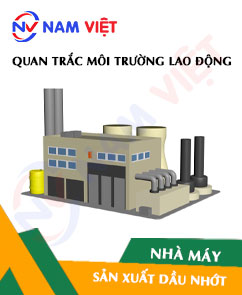
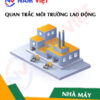
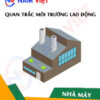
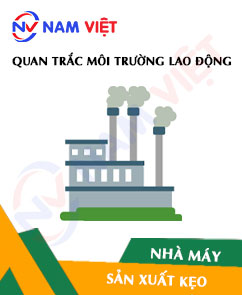


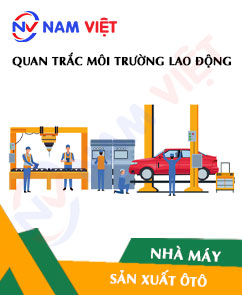
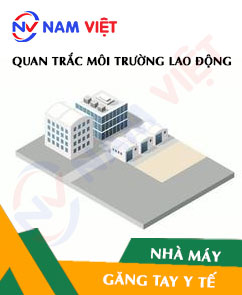


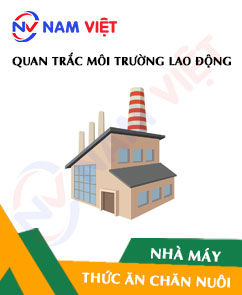
Review Occupational environment monitoring at a lubricating oil manufacturing factory
There are no reviews yet.